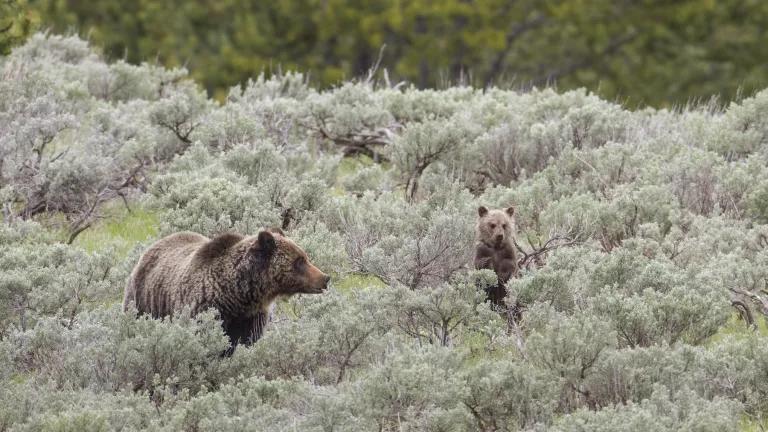No Room to Roam - New Top Ten Report Highlights the Isolation of Yellowstone Grizzly Bears

Each year the Endangered Species Coalition issues a Top Ten Report highlighting an emerging conservation concern. This year's report focuses on the increasingly fragmented and disconnected habitats that leave species with 'No Room to Roam.' Among the top candidates of isolated species is the Yellowstone population of Grizzly Bears.
Grizzly bears used to occupy much of the western United States - from California to the central plains and from Canada down to Mexico. But by the beginning of the 1900s, grizzly bears had been eliminated from nearly their entire range in the lower 48 states. Only a small population survived in and around Yellowstone National Park with most remaining bears occurring along the Canadian border to the north. By the 1980s the bears in Yellowstone National Park had been isolated from any other population of grizzly bears for around a century.
Now, 40 years after grizzly bears were added to the endangered species list, the Yellowstone population remains isolated. There has been no documentation of any bear making its way north to connect with grizzlies from the Northern Continental Divide Ecosystem around Glacier. Nor do we know of any bear making its way south into Yellowstone from that northern population. Any wildlife population of only several hundred individuals in isolation is at risk of losing genetic diversity, which is critically important for its continued survival and ability to adapt. And yet, the U.S. Fish and Wildlife Service is poised to propose lifting Endangered Species Act protections for the Yellowstone grizzly bears and declaring them 'recovered.'
Credit: USGS
On top of the issue of isolation, the Greater Yellowstone Ecosystem has undergone dramatic changes in the last decade or so with the loss of critical food sources for the grizzly bears such as the collapse of whitebark pine trees. Additionally, this past year state officials say the berry crop failed, meaning that bears had even fewer options for food. These changes are causing grizzly bears to use the landscape differently - foraging at lower elevations where they are more likely to come into conflicts with humans. This year alone has seen a high number of dead grizzly bears in the Yellowstone region. And the most recent population count of 714 bears is down 6% from last year.
The federal scientists in charge of Yellowstone's grizzlies will tell you there is nothing to worry about - that the bears will eat anything so the loss of food sources is not a problem, that the increased conflicts are because the population is doing so well (not so poorly), that the decline in the population count is due to variation and doesn't signify an actual downward trend. They will also tell you that if the Yellowstone grizzly population never connects to other populations of grizzlies they will simply capture some bears up north and truck them down to Yellowstone. Problem solved.
But you don't have to be a scientist to understand that all of these things raise some serious questions about whether grizzly bears in the Yellowstone region have fully recovered. A truly recovered population would have a secure future with a diversity of food sources and an effective plan to help people and bears avoid conflicts. And, above all, a recovered population would be interconnected with a network of other grizzly bear populations. To achieve that, Yellowstone grizzlies are going to need room to roam.

Credit: National Park Service




